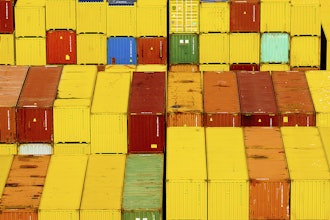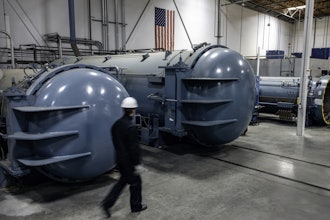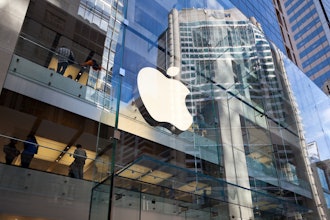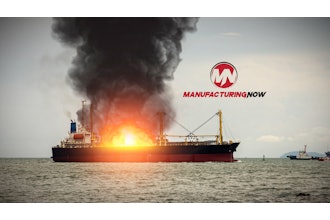
Water: Reuse it or lose it
As a result of a projected rise in sales, the U.S. food and beverage industry expects continued growth in 2014, according to WeiserMazars’ Food & Beverage Industry Study[1]. Survey respondents predicted that the most important factors influencing growth in 2014 will be new customers (39 percent), improved sales performance (21 percent) and new products (17 percent). As manufacturing plants support this industry growth, managers may seek ways to increase profits by maximizing efficiency in their facilities.
Water reuse, including reclaimed and recycled water, is one method food and beverage facilities can employ to alleviate business risk, enhance sustainability practices and safeguard water quality standards by decreasing the plant’s dependency on external water sources. Water reuse is the use of treated wastewater in nonprocess applications with lower quality requirements within the food and beverage industry. Reclaimed or recycled water is former wastewater that is treated and frequently disinfected to remove solids and impurities, and kept for a second use rather than being discharged back into the environment. Reclaimed water can be used in food and beverage plants for nonproduct applications, such as landscape irrigation, truck washing and warehouse floor washing. The purpose of these processes is sustainability and water conservation, rather than discharging treated water to surface waters such as rivers and oceans.
Many food and beverage facilities use large quantities of potable water in their daily operations, impacting local water supply and surface water quality. Reusing water is a logical way to minimize a facility’s environmental footprint.
Practicing sustainability
Throughout industry, there is a great focus on social responsibility and water stewardship. Companies are investing more heavily in their sustainability efforts than ever before and are better managing their water use.
Water reuse offers a water source that is dependable, locally controlled and not harmful to the environment. It also enables facilities and their communities to become less dependent on groundwater and surface water sources, decreasing the diversion of water from sensitive ecosystems.
Effluent challenges
Food and beverage processing facilities that reuse water can reduce the amount of wastewater they discharge into the environment and surrounding community. Wastewater that is discharged into a collection network is generally handled by a Publically Owned Treatment Works (POTW) or treated under the National Pollutant Discharge Elimination System (NPDES).
In the U.S., POTW facilities are owned by local governments or municipalities, and are designed to treat domestic sewage, not industrial wastewater. Some industrial facilities can be permitted to discharge water to these treatment plants if they follow certain pretreatment processes, such as removal of solids and adjustment of pH. POTWs are sensitive to industrial discharge because of the potential impact it can have on its operations. As a result, many POTWs require companies to pull permits for discharge and charge significant fees.
Discharging water into a river, lake or other body of water falls under the NPDES, a division of the Environmental Protection Agency. Companies discharging wastewater through the NPDES must treat the water more heavily than if they were to discharge it to a POTW facility. As a government-regulated system, there are strict permit requirements for this type of discharge. In fact, many of these standards are more stringent than those imposed for reuse. By not following mandated provisions, companies also could be responsible for environmental damage remediation.
Companies discharging wastewater either through POTWs or NPDES should consider their full cost of wastewater disposal when evaluating treatment and reuse options for their wastewater.Choosing the best treatment option
Every food and beverage manufacturing facility is unique and requires tailored treatment and water reuse solutions for its applications. Wastewater treatment technologies can be classified in two ways: conventional treatment processes, which can remove solids and adjust pH and chlorine levels; and advanced processes, which filter and oxidize water and result in a higher quality product. Advanced processes give the plant more flexibility with how and where the recycled water is used.
There are various technologies within a standard treatment process that can be configured for site-specific reasons. To remove coarse solids, screens and filters can be used to block the sediment from discharging with the wastewater; however, when a standard treatment process isn’t enough, an advanced program can be deployed, using microfiltration or ultrafiltration membranes, reverse osmosis, oxidation and disinfection.Pump up the savings
Besides saving water, reuse can also lead to cost and energy savings. Treating water is just the first step to guaranteeing wastewater is reused efficiently and effectively within a food and beverage plant. It’s vital for facilities to also keep in mind the transportation and storage of water. Treatment and pumping systems are the primary energy consumers in water systems, including those used in the reuse process. Sizing the systems and selecting the right equipment to meet specific reuse requirements are critical to maximizing water system equipment’s energy use.
Pump and piping selection can have a considerable impact on the energy consumed during the course of the water system’s life. For optimal use, pumps should operate as close to Best Efficiency Point (BEP) as possible, and the plumbing should be engineered to minimize friction loss. BEP is the flow rate at which a pump has its highest efficiency. If operating outside of this point, the pump system will consume more energy per unit volume of water pumped, ultimately not achieving maximum savings. According to global water company Xylem, a water reuse system using improperly sized piping and pumps can increase energy consumption in a facility by 200 to 300 percent[2].
Get in the game
A food and beverage plant’s total water and wastewater costs are significant and will continue to rise as facilities grow in size. Whatever the application is, the sustainability benefits of water reuse include reduced demand on water supply, wastewater disposal and impact on the local community. Using the correct water reuse technologies increases the company’s sustainable business practices and commitment to helping the environment by recycling earth’s most valuable renewable resource.
About the author: Nate Maguire has more than nine years of experience in the water industry and currently serves as the Americas business unit director, industry and agriculture for Xylem’s applied water systems business unit. He can be reached at [email protected].



















